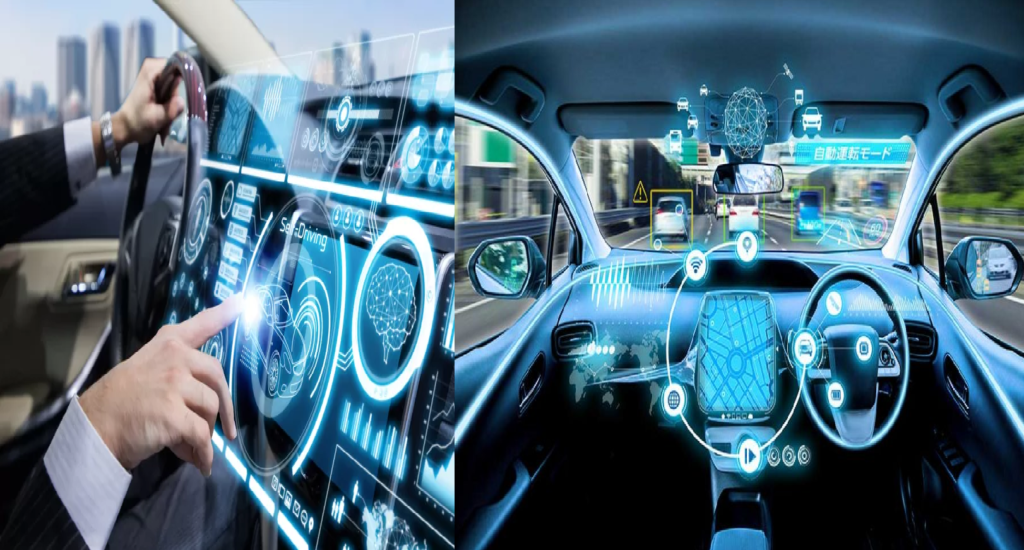Latest Technological Innovations in the Automobile Industry
Latest Technological Innovations in the Automobile Industry
Latest Technological Innovations: Advanced technology developments are driving a major transition in the vehicle sector. From electric vehicles to autonomous driving, these innovations are shaping the future of transportation. In this blog post, we will explore the latest technological innovations in the automobile industry, discussing their impact, benefits, and prospects.
Latest Technological Innovations: Electric Vehicles (EVs)
Electric vehicles are at the forefront of the automotive revolution. With growing concerns about climate change and the need for sustainable transportation, EVs are becoming increasingly popular. According to the International Energy Agency, the global electric car stock surpassed 10 million in 2020, a 43% increase from the previous year.
Latest Technological Innovations: Advantages of Electric Vehicles
Electric vehicles offer numerous advantages over traditional internal combustion engine (ICE) vehicles:
- Environmental Benefits: Since EVs emit no greenhouse gases or air pollutants, they have zero tailpipe emissions.
- Lower Operating Costs: Electricity is generally cheaper than gasoline, and EVs have fewer moving parts, leading to lower maintenance costs.
- Energy Efficiency: Electric motors are more efficient than ICEs, converting a higher percentage of energy from the battery to power the wheels.
Latest Technological Innovations: Autonomous Driving
Autonomous driving technology is another major innovation in the automotive industry. Businesses that are heavily investing in the development of self-driving cars include Tesla, Waymo, and Uber. According to a report by Allied Market Research, the global autonomous vehicle market is expected to reach $556.67 billion by 2026, growing at a CAGR of 39.47% from 2019 to 2026.
Levels of Autonomous Driving
The Society of Automotive Engineers (SAE) defines six levels of autonomy, ranging from Level 0 (no automation) to Level 5 (full automation):
- Level 0: No automation; the driver is responsible for all driving tasks.
- Level 1: Driver aid; the car can help with acceleration and steering, but the driver has to stay in control.
- Level 2: Partial automation; the vehicle can control both steering and acceleration, but the driver must monitor the environment and be ready to take over.
- Level 3: Conditional automation; most driving activities can be handled by the car, but the driver needs to be ready to take over when needed.
- Level 4: High automation; the vehicle can operate autonomously in certain conditions, but a driver may still be required in others.
- Level 5: Complete automation, wherein the car may run in any situation autonomously.
Benefits of Autonomous Driving
Latest Technological Innovations: Autonomous driving technology offers several potential benefits:
- Enhanced Safety: Autonomous vehicles can reduce human error, which is responsible for 94% of traffic accidents, according to the National Highway Traffic Safety Administration (NHTSA).
- Better Traffic Flow: Since self-driving cars can converse with one another, traffic flow can be optimized and congestion can be decreased.
- Increased Accessibility: Autonomous vehicles can provide mobility for individuals who are unable to drive, such as the elderly and disabled.
Latest Technological Innovations: Connected Cars
Connected car technology enables vehicles to communicate with each other and with infrastructure, enhancing safety, efficiency, and convenience. According to a report by MarketsandMarkets, the global connected car market is projected to reach $166.0 billion by 2025, growing at a CAGR of 25.2% from 2020 to 2025.
Vehicle-to-Everything (V2X) Communication
- Vehicle-to-everything (V2X) communication encompasses several types of connectivity:
- Vehicle-to-Vehicle (V2V): Communication between vehicles to exchange information about speed, position, and other data to prevent collisions and improve traffic flow.
- Vehicle-to-Infrastructure (V2I): To improve efficiency and safety, communication is established between automobiles and infrastructure, such as traffic lights and road signs.
- Vehicle-to-Pedestrian (V2P): Communication between vehicles and pedestrians to improve safety for pedestrians and cyclists.
- Vehicle-to-Network (V2N): Communication between vehicles and cloud networks to access real-time traffic information, weather updates, and other data.
Benefits of Connected Cars
Connected cars offer a range of benefits:
1. Enhanced Safety: V2X communication can prevent accidents by providing real-time information about road conditions, traffic, and potential hazards.
2. Improved Efficiency: Connected cars can optimize routes and reduce fuel consumption by accessing real-time traffic data.
3. Convenience: Features like remote diagnostics, over-the-air updates, and infotainment systems enhance the driving experience.
Latest Technological Innovations: Advanced Driver Assistance Systems (ADAS)
The purpose of advanced driver assistance systems (ADAS) is to improve both driving comfort and vehicle safety. These systems use sensors, cameras, and radar to monitor the vehicle’s surroundings and assist the driver in making informed decisions. According to a report by Grand View Research, the global ADAS market is expected to reach $67.43 billion by 2025, growing at a CAGR of 19.0% from 2019 to 2025.
Common ADAS Features
Some common ADAS features include:
1. With adaptive cruise control (ACC), the car automatically modifies its speed to keep a safe distance from the car in front of it.
2. The Lane Departure Warning (LDW) system warns the driver when their car inadvertently leaves its lane.
3. Automatic Emergency Braking (AEB): Detects an imminent collision and applies the brakes to prevent or mitigate the impact.
4. Blind Spot Detection (BSD): Warns the driver of vehicles in their blind spots during lane changes.
5. Parking Assistance: Assists the driver in parking the vehicle by providing guidance or taking control of the steering.
Benefits of ADAS
ADAS offers several benefits:
- Increased Safety: ADAS features can reduce the risk of accidents by assisting the driver and providing real-time alerts.
- Reduced Driver Fatigue: By automating certain driving tasks, ADAS can reduce driver fatigue and improve comfort during long journeys.
- Reduced Insurance Premiums: Because ADAS-equipped cars have more advanced safety features, they may be eligible for reduced insurance rates.
While electric vehicles have gained significant traction, hydrogen fuel cell vehicles (FCVs) are also emerging as a promising alternative. According to the Hydrogen Council, the number of hydrogen fuel cell vehicles on the road is expected to reach 10 million by 2030.
Latest Technological Innovations: How Hydrogen Fuel Cell Vehicles Work
Hydrogen fuel cell vehicles use a chemical reaction between hydrogen and oxygen to produce electricity, which powers the vehicle’s electric motor. The only byproduct of this reaction is water vapor, making FCVs environmentally friendly.
Latest Technological Innovations: Advantages of Hydrogen Fuel Cell Vehicles
Hydrogen fuel cell vehicles offer several advantages:
- Zero Emissions: Since the only byproduct produced by FCVs is water vapor, there are no emissions from their exhaust.
- Quick refilling: Refueling a hydrogen fuel cell car just takes a few minutes, much like refilling a car powered by gasoline.
- Long Range: FCVs typically offer a longer driving range compared to battery electric vehicles, making them suitable for longer trips.
Conclusion
The automobile industry is experiencing a technological revolution, with innovations such as electric vehicles, autonomous driving, connected cars, advanced driver assistance systems, and hydrogen fuel cell vehicles shaping the future of transportation. These advancements offer numerous benefits, including enhanced safety, improved efficiency, and reduced environmental impact. As technology continues to evolve, the automotive landscape will undoubtedly be transformed, paving the way for a more sustainable and connected future.
As consumers, staying informed about these technological innovations can help us make better decisions when it comes to purchasing and using vehicles. Whether you are an early adopter or a cautious observer, the future of the automobile industry promises exciting developments that will redefine the way we travel.
https://aamnewsnetwork.com/the-hottest-gadgets-of-2023-what-you-need-to-know/





Pingback: The Best Motorbikes for Long-Distance Touring - ANN
Pingback: Entertainment Tax in India 2024: Everything You Need to Know